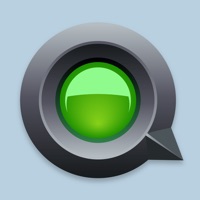

My suggested setup is to run the Open Stage Control server at Front Of House (for example, on the System computer), with the local GUI active, so the Sound Operator can see that it is working correctly. This might happen if you bundle the workspace. If you ever need to re-generate 'qlab-info-config.json', you can simply run the process again.

On the computer running the server, open '2-generate-app-config.applescript' in script editor, and run the script.If you are running the server on a mac:.Whether you want any transport controls.Whether you want to use a TCP or UDP connection.When setting up the Main QLab computer, you will also be asked:.Replace the line break (between the 2 quote marks) with \r and re-compile, and save. NB: If you can only see 127.0.0.1, try cmd+F "set theIPs to splitString(theReturned".NB: 127.0.0.1 is the localhost address.a control network and a Dante network, this allows you to select the correct one. If your computer is on multiple networks, e.g. The third dialog box asks you which local IP address you wish to use.The second dialog box allows you to choose the cue list you wish to monitor.If you have a main and backup QLab computer, ensure you run this setup process on the main first, then repeat the process on the backup, selecting "Backup", to complete the config file.

If this is your only QLab computer, or if this is your "Main" or "A" machine, select "Main".The first dialog box asks you to define the QLab computer.Run the script - this will create 'qlab-info-config.json' in the root folder.Ensure your QLab file is open, and the front-most QLab workspace.On your QLab computer, navigate to the above folder over the network and open '1-generate-module-config.applescript' in script editor.Port 53000 (and 53001 if using UDP) must be open. Ensure the computer is on the network, and file sharing is enabled. First, put the repository folder on the computer you wish to run the web-server from.This will change the playhead on both the Main and Backup QLab macs simultaneously. MD) needs the ability to change the playhead.

The intention would be for scenarios where the physical button is only a "Go" and "Stop", but the operator (e.g.
#Qlab remote full
If you wish to use UDP, you must send a thump (heartbeat) message to QLab to maintain the connection – to enable this, choose "UDP" when setting up the first applescript, or ensure qlab-info-config.json contains eTCP = false.įrom v4.1.0, there is also the option for transport controls - either full transport (next, previous, go, panic) or reduced controls (next, previous). I recommend using TCP, as this maintains a permanent connection to QLab, increasing reliability, but with minimal CPU overhead. You can run the module with either a UDP or TCP connection to QLab. It requests updates from QLab when there are changes to the workspace, and interprets the responses appropriately - the module ignores responses which do not relate to the playhead position of the chosen cue list. This version runs entirely within the Open Stage Control software, as a 'custom module'. There is an alternative version of this repository at /bsmith96/qlab-display-separate-cue-list/, which allows you to set separate trigger and playback cue lists. NB: If you are looking for the standalone Node.js version, check release v3.1.0 and earlier.


 0 kommentar(er)
0 kommentar(er)
